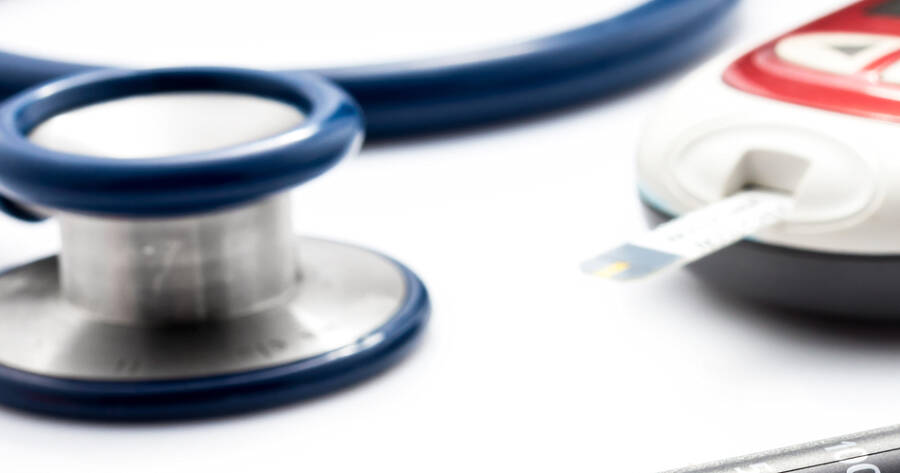If you have type two diabetes, you’re already aware of the absolute importance of managing your disease properly. Just having type two diabetes puts you at risk for other health issues such as eye diseases, infections, heart disease, and more. Not taking care of your diabetes can mean even worse problems for your long-term health and longevity.
To keep you up-to-date, here are some of the latest treatments, research, apps, and gadgets. Together, they’ll help you remain on top of your glucose levels, diet, medications, and fitness.
New Research on Diabetes
First, the research. A lot of money is being spent by many organizations to figure out this growing disease. What’s causing people to become diabetic? Which treatments work best? How can it be prevented – or even reversed? Research looks to discover all of that. Here’s some of the latest research findings on diabetes.
Coffee’s Benefits
Do you love your coffee in the morning? Have you ever felt badly about drinking too much? Worry no more! In 2016, researchers learned that a cup of coffee might prevent type 2 diabetes. According to new recommendations by the FDA, up to five cups can be consumed per day without seeing adverse affects. So drink up, coffee lovers.
Genetics and Diabetes
Some forms of diabetes appear to have a genetic link. This research suggests that between 1 and 5 percent of all cases have a single cause (genetics) rather than multiple causes (genetics plus environment). The hope is that this research can lead to customized genetic treatments.
Catch Up On Sleep for Better Insulin Control
Sleep deprivation is listed as one risk factor of insulin resistance and diabetes. Cutting into your sleep can cause your body to start metabolizing glucose poorly by increasing your insulin resistance, a known factor in type two diabetes. According to this research, spending two nights catching up on sleep can restore your body to pre-deprivation levels of insulin sensitivity. For the average diabetic, this might mean that not sleeping enough may contribute to poor glucose control.
New Treatments for Diabetes
Diabetes management has come a long way since the days of injecting pig insulin. Now there are many new treatments to manage type two diabetes. Here are just a few that have generated significant buzz in 2017.
Basaglar: Biosimilar Insulin
According to the research, type 2 diabetics saw positive results when they switched from Lantus to Basaglar, a biosimilar insulin from Lilly. It’s been approved by the FDA and is set to be released in the United States at the end of 2016. For more information, visit Lilly’s website or talk to your doctor.
The Insulin Patch
Researchers are closer to creating the insulin patch, and the results of a $1.6 million dollar-based research grant are proving it. The researcher on the project, Dr. Gu, “plans to expand the capacity of the patches to include glucagon – the hormone that counteracts insulin – in case blood glucose levels go too low.”
First Hybrid Artificial Pancreas
In September 2016, the FDA approved the first ever hybrid artificial pancreas. The device is as small as a pager and can be worn on a belt. It’s part glucose monitor and part insulin pump that checks glucose levels and delivers a steady stream of insulin at preset intervals and amounts. While it’s not completely automated (you still have to check your levels and adjust at meal times), it’s a lot closer to “automated” than previous options.
Apps for Managing Diabetes
Managing your diabetes shouldn’t be rocket science, and the apps listed here are proof of that. Gone are the days when you had to track everything on a piece of paper and perform the math yourself. Now you can receive daily reminders, get help with calculations, and even find low carb food from your mobile device. Here are just a few of the most helpful mobile apps for Android and iPhone.
iCookbook Diabetic
The iCookbook Diabetic by Publications International is an iPhone-only app that acts as a portable diabetic cookbook. Search from thousands of recipes, each one a diabetic-friendly meal.
Glooko
Glooko is an app for both Android and iPhone mobile devices which coordinates all your diabetic devices and physicians together. Glooko lets you to sync glucose devices, an insulin pump, fitness trackers, and more using just one app. There’s also other features like diet tracking, carb intake management, insulin tracking, and blood sugar management. The only downside is an annual subscription fee.
mySugr Diabetes Logbook
The mySugr Android/iPhone app is a free way to track everything from one dashboard. You can track your moods, injections, and more. The parent company has other diabetes-related apps too, so there’s a complete suite of tools made to fit every need.
GoMeals App
The GoMeals mobile app helps you make healthier meal choices. Use its “Restaurant Locator” to find local restaurants and see nutritional information. Track what you’re eating and what you’re going to eat for free using the GoMeals app.
Gadgets for Managing Diabetes
Managing your diabetes often includes a mix of software and hardware. Besides your phone, there’s some new hardware that will make the job of staying on track easier than ever.
[su_tabs style=”sharp”][su_tab title=”Medtronic MiniMed mySentry for Kids”]Not everyone with Type 2 is an adult. The Medtronic MiniMed mySentry is first remote glucose monitor approved by the Food and Drug Administration. The mySentry MiniMed listens for wireless signals from the child’s glucose monitor and displays it on the screen. It can also be programmed to make noises and display alerts visually when nighttime glucose levels get too low, which means that parents can rest easier and everyone stays safer.[/su_tab] [su_tab title=”Glooko MeterSync Cable”]The Glooko app mentioned earlier also connects to a large number of FDA-approved glucose meters and uploads the data to the Glooko phone application via a cable called the MeterSync Cable. The cable is about $39.95 and the mobile application is free.[/su_tab] [su_tab title=”MedFolio Electronic Pillbox”]Is remembering to take one of your multiple medications a problem? There’s a practical device can help. The MedFolio Electronic Pillbox is a digital pillbox that sends you alerts and reminders so you never forget a dose again. It costs around $248.[/su_tab][/su_tabs]
Thanks to the new tools, treatments, and applications on the market right now, you should find it easier than ever to stay on top of your health. This means that you’ll have a better chance of avoiding long-term complications that come from poor glucose management and experience a better quality of life for years to come.



